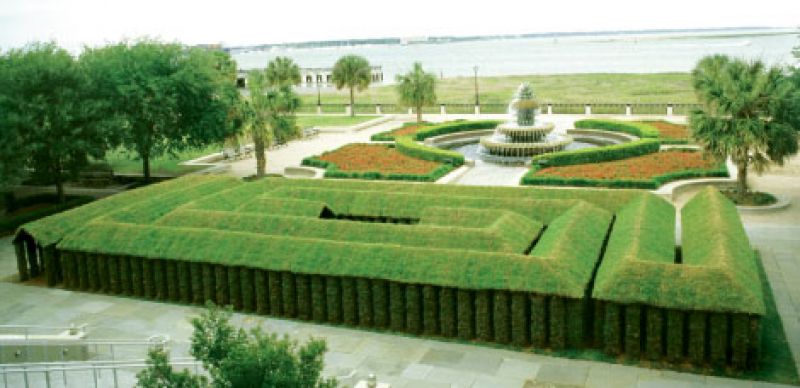
While his work generally draws admiration, College of Charleston art professor Herb Parker wryly recalls one installation a decade ago in Savannah that garnered quite a different reaction. As he was finishing the large earthen sculpture with a shovel, a group of passing tourists began berating him for desecrating what they believed to be a sacred site. “They mistook my art for Civil War earthworks and thought I was altering the fortification.” The instance speaks to the timeless illusion characterizing Parker’s works, but a sense of settled permanence isn’t something for which he strives. Rather, a patina is derived from his use of indigenous materials: sod, rammed earth, stone, clay, thatch—resources used for millennia to meet one of humankind’s most primal needs: shelter. Each of Parker’s works features an opening or passageway. “Entering into or journeying through such spaces has always had sacred significance,” Parker explains, “but my structures are also places of dialogue.” In Japan, a rushing waterfall’s roar drowns out human voices, but at its foot, a small hut based on the area’s earliest pit dwellings allows for quiet conversation inside. The doorway to Parker’s shelter stands at the intersection of clamor and calm, exposure and sanctuary, isolation and communion, so that crossing the threshold becomes a sacred act. At times, Parker’s site-specific work draws seemingly mystical inspiration from a locale. In the Italian Alps, he built a small shed atop an old slaking pit where concrete was once made. Some elderly villagers were startled when they viewed his finished work. “Later, they brought me photographs taken before the old pit was demolished in the late 19th century,” he recalls. “What I’d built looked exactly like what had stood there before.” Musing for a moment that his structure will eventually end up like the original, Parker nevertheless seems uniquely content with the ubi sunt nature (meditating on the transience of life and beauty) of his art. Though we tend to judge a work by its enduring qualities, the opposite principle applies to Parker’s organic structures, which begin deteriorating the moment they’re completed. “Then again, you can do such large-scale things on a temporary basis that you’d never be allowed to do permanently,” he rationalizes. “I borrow from the Earth, but as it takes back, the site soon looks just like it did before I started.” From Herb Parker’s perspective, that’s a pretty fair trade.